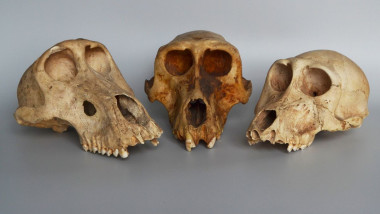Ancient Egypt's sacred baboons had tough lives, study suggests
Baboons sacred to the ancient Egyptians were glorified as mummies after their death, but they suffered from poor conditions when they were alive, a new study suggests.
The researchers examined bones from dozens of mummified baboons from ancient Egypt between the ninth century B.C. and the fourth century A.D. and found evidence that many had suffered from poor diets as well as bone disorders often caused by lack of sunlight.
Of the remains of 36 baboons found at a necropolis for sacred animals at Gabbanat el-Qurud in southern Egypt, just four appeared to be in good health. “All the others showed deficiencies in the skeleton,” said Wim Van Neer, a paleontologist at the Royal Belgian Institute of Natural Sciences and lead author of the study, published today (Dec. 6) in the journal PLOS One.

Add comment